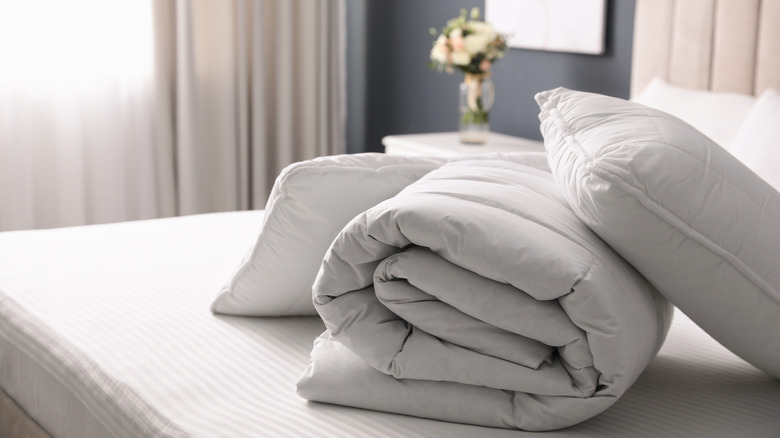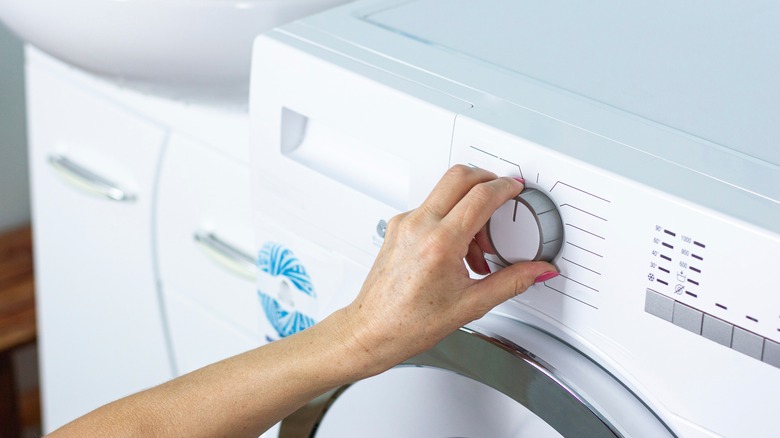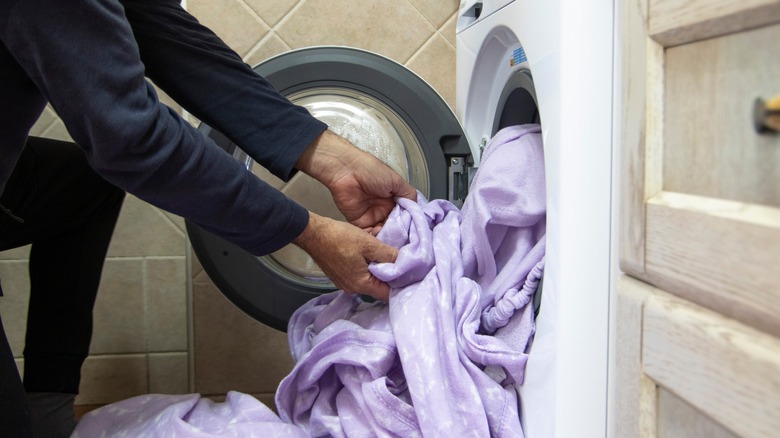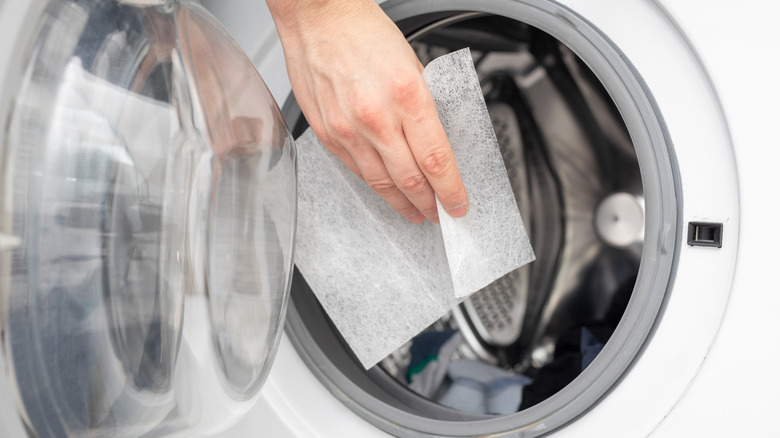The Best Way To Clean Bedding And Other Linens After A Lice Infestation
Fighting a lice infestation can be a true nightmare. But, all you need is the correct knowledge of how to fend off these tiny creepy crawlies. After all infested individuals in your household have been treated, you should next tackle the laundry. Bedding and other linens will need special attention and will need to be washed at a high temperature — and anything that an infested person has worn or come into contact with within the 2-day period before they were treated should be washed.
First, you'll sort your laundry into items that can be washed and items that can't. If the item can't be washed and dried at home, seal your items in a plastic bag for two days then take them to the dry cleaners, as lice can only survive for 48 hours off the body. Just make sure you tell the dry cleaner the items are lice-infested so they can properly clean and handle your items. Once all your non-washable items are bagged, you can move on to your washable items.
Wash lice infested bedding at the correct temperature
Make sure you strip all of the sheets, pillowcases, towels, pillows, blankets, and comforters from the bed. Sheets, towels, and pillowcases should all be washed. If you're concerned about washing your pillows, blankets, and comforters in your home washing machine, you can take the items to the laundromat in a sealed plastic bag. You can put the normal amount of detergent that you regularly use, but the key here is the water temperature — you must run your laundry in a hot water cycle that's at least 130 degrees Fahrenheit or hotter.
Lice are incredibly resilient and will grab onto fabric to prevent them from being washed away. Lice have been known to survive after being submerged in water for 8 hours, however, they will die after only 5 minutes of being in water that is 128.3 degrees Fahrenheit or greater. If your machine has a sanitize cycle, even better, as that cycle usually gets as hot as 165 degrees Fahrenheit, which will definitely kill all of the lice. You can also give the bedding an extra soak cycle so the lice spend more time submerged in the hot water.
Drying lice infested bedding
Once you're done washing your clothes, toss them into your dryer. If you have delicate items that can't go in the dryer, you can air dry them as long as they've been washed first at 130 degrees Fahrenheit or higher. But it's best to place your items through both the washer and dryer if possible. Run your dryer on the highest heat setting for at least 40 minutes.
You can also place items that can't go in the washing machine directly into the dryer. Most dryers will get as hot as 125 to 135 degrees Fahrenheit, so your dryer will likely be able to kill lice any lice on these bulky or unwashable items. This will give you some peace of mind for treating items like pillows or large down comforters. Complete these steps until every last piece of your laundry is done. You might want to repeat this process with your bedding until you are confident the infestation is totally gone and everyone in your house is lice-free.
Potenial hazards for washing and drying your clothes at high temperatures
Washing and drying your bedding in raised temperatures can sometimes expose these items to damage. Hot water can discolor certain items causing colors to fade or run. It can also shrink fabrics like cotton. If your bedding is made from synthetic or delicate materials, the hot water can even damage them by causing them to melt, break apart the fibers, or permanently wrinkle. So, you might want to consider dry cleaning these items or using the bag method instead.
Washing and drying clothes in hot water can also dry your clothing out. It's a good idea to use some liquid fabric softener and dryer sheets while doing this laundry. This is a great method for getting softer sheets and preventing your bedding from becoming brittle and harsh feeling. If you're not sure how hot your washing machine water or dryer gets, or if you just want extra protection, you can include a laundry additive that kills lice to your wash cycle.



